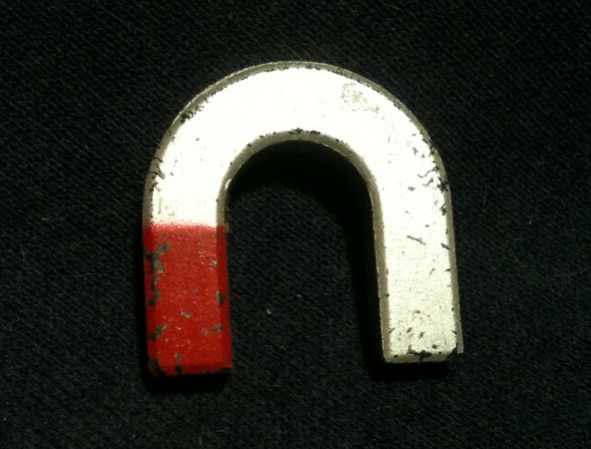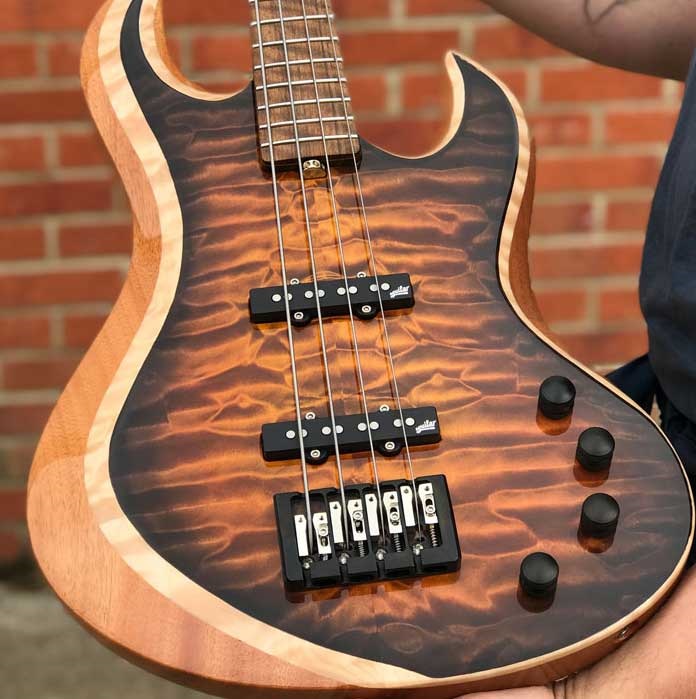By now you’ve probably heard Alnico magnets referenced when checking out pickups . They are used in a wide variety of pickups, from Fender’s Vintage Jazz-Bass Set to Antiquity’s Precision-Bass pickup. But what exactly is an Alnico magnet anyways?
An alnico is an iron alloy that is composed of, as you might guess from it’s name, aluminium, nickle, cobalt, and iron. Yeah, not sure why iron got left out of the celebrity-couple-esque naming amalgamation device.
It’s what they call a permanent magnet, which means it holds its magnetism for a longer period of time. Along with it’s strength, this is why Alnico is often the choice of magnets in production, not just in pickups, microphones, and speakers, but also in motors and radars.
When it was discovered in the 1930’s they found that it possessed a coercivity of 400 oersted, the unit for measuring the strength and intensity. That was double the levels they were getting from the steel magnets popular at the time.
An Alnico II pickup is weaker than an Alnico V, which is weaker than an Alnico VII. The different strength in alnico magnet pickups helps create a different tone. The strength of a magnetic field from the pickup effects the vibrations of the strings. A weaker magnet means more string vibration.
However, when it comes to creating great tone, materials are often given too much credit, and great design not enough.
While it’s the general opinion that Alnico creates a warm tone, in classifying one material as strictly one thing we run the risk of oversimplifying things. It’s not an exact science. There are Lindy Fralin pickups that are designed with Alnico magnets to have a wonderful bright sound, while there are also pickups from EMG that use ceramic magnets, but which still possess that vintage warm tone.
Check out this video of Seymour Duncan, of Seymour Duncan pickups, explain the difference between Alnico magnets.




Mike Bloomfield had at least one other blond/rosewood fretboard ttcleaseer. He had a transition logo tele that he is pictured with at the Monterey Pop Festival. I believe that is the tele that was later painted by his friend Bob Welland’s daughter (it is shown on the cover of the If You Love These Blues, Play Em As You Please CD)Regards, Jan
The late grandfather of pickup making, Bill Lawrence, who’s special field of study in Germany was magnets and magnatism often said that magnets themselves make no sound. It’s how they are used in the complete design of the pickup that mattered. He used both alnico and ceramics, which ever worked and sounded best for a particular design. They’re both capable of sweet tones, and both capable of bad tone if used in a bad design. In a blindfold test I once attended, not a single musician could tell the difference between a good alnico and good ceramic pickup of the same design. Magnet strength, not material, is where the biggest difference occurs.
Hi…. I will soon be takng ownership of a P-J bass with awl Alnico V magnet pickups one bridge Jazz pickup near the bridge and split pickups near the neck. I courious to know what they are like??? Kind Regards Paul